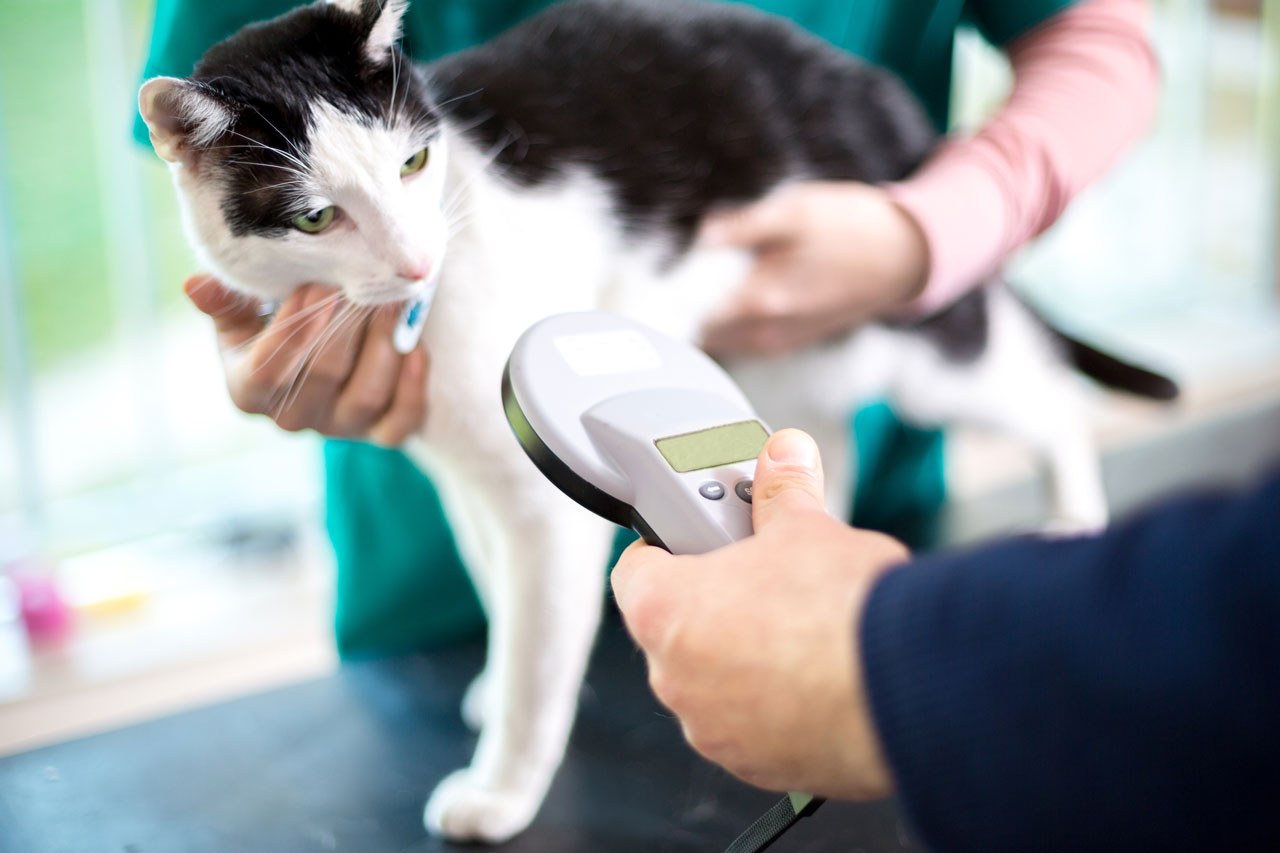- Home
- Do Indoor Cats Need Microchips?
Do Indoor Cats Need Microchips?

Keeping your cat inside is safest for him. After all, there are dangers outside that can shorten his life, like cars, malicious people, and contagious feline illnesses. But keeping your kitty inside doesn't necessarily mean he won't need some of the primary veterinary care you might associate with outside cats.
For example, your veterinarian might still recommend certain vaccines, flea preventative, and other care for your inside cat. Similarly, it's safest for indoor cats to be microchipped.
What Is a Microchip?
A microchip is a small device that can be implanted under a cat's skin. It's a silicone case with a computer chip and some electronics inside. When the microchip is scanned with a special device, it emits a code. That code can then be reported to the microchip company, and assuming the cat's owner has accurately reported their data, the owner can be identified and contacted.
A microchip is usually inserted under the skin between a cat's shoulder blades. It can migrate over time, so when a scanner is used to look for a chip, the entire body should be scanned.
Why Does an Indoor Cat Need a Microchip?
We all know cats have minds of their own. They don't always do what we want them to or what we think they're going to do. They can be master escape artists and get outside when we least expect it.
Cats might escape when you have friends over who aren't as quick at closing the door as you are. Noise from a party, home repair, or moving furniture around can cause a cat to work on finding a way out of the house.
Another vulnerable time for an indoor cat is when you need to take him out for a car ride somewhere. A visit to the vet, groomer, or elsewhere can be scary for a cat, and escapes do happen. Be sure to keep your cat in a secure carrier whenever you need to take him out.
A microchip doesn't track a cat. There isn't any GPS involved. If your cat is lost, someone will need to scan him for the chip, and your information as the owner will have to be properly registered with the company in order for the finder to contact you.
A cat that is indoors all the time might become lost outside more easily than one that's used to going out and coming back. He is also more likely to be extremely scared once he gets out there, which might cause him to run further away from home or hide somewhere.
A microchip is an easy, reasonably affordable way to help your cat get home if he does somehow escape and end up lost.
Visible Identification Is Crucial Too
In addition to the permanent identification provided by a microchip, your indoor cat should always wear visible ID tags displaying your current contact information. Be sure to use a breakaway collar, which is the only safe type of collar for a cat to wear unsupervised. It's designed to release if it's caught on something, so the cat isn't strangled.
When your cat is wearing visible identification and has a microchip, he will have the best chance of getting home to you if he somehow escapes and becomes lost.
 Loading... Please wait...
Loading... Please wait...




